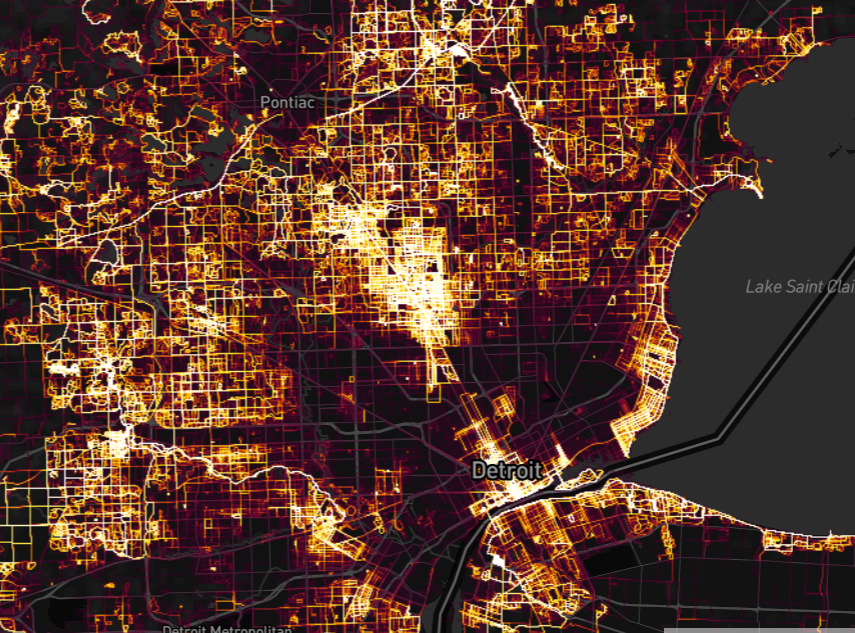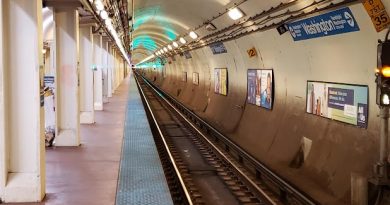Strava’s Heat Map Makes The Case For Safer Streets.
Dion Thompson-Davoli, who last month penned this piece on the since-failed Moroun effort to rezone an industrial corridor in Southwest Detroit, sent this heat map from the Strava app, which tracks running and cycling from smartphone location data. It’s interesting to see how much of the city of Detroit is completely dark. Pontiac is dark. There are huge corridors that are also dark– unsurprisingly, around interstates. The bright areas in the city proper include the 7.2 and the Woodward corridor. The little block due north of New Center-ish is Hamtramck. And to the east? Why, Grosse Pointe, of course. The heat map doesn’t show where people aren’t walking. But it does make the case for better nonmotorized infrastructure– and safer streets.

What’s the takeaway here?
What, do people in the hood not ride bikes or walk? Well, of course they do. They might not use Strava, of course, so there’s certainly a question of consumption and tech access. In Detroit, the value proposition for transit and bike infrastructure is vital given the hundreds of thousands of people who don’t have access to a car but still need to get around. You know, like we all need to get around. This is not just an intra-city thing, but an inter-city thing. Most trips might be local, but in super low-density, disinvested areas, connectivity to other points of activity (jobs, school, etc.) is vital. But bigger here is that there are plenty of neighborhoods in Detroit that simply do not have safe infrastructure for nonmotorized transportation. The Strava heat map– beside being pretty- should some important questions about our priorities for the built environment.
Check out Dion Thompson-Davoli’s February piece below. Thank you for supporting independent journalism!
A Common-Sense Rezoning Hits Billionaire Resistance



